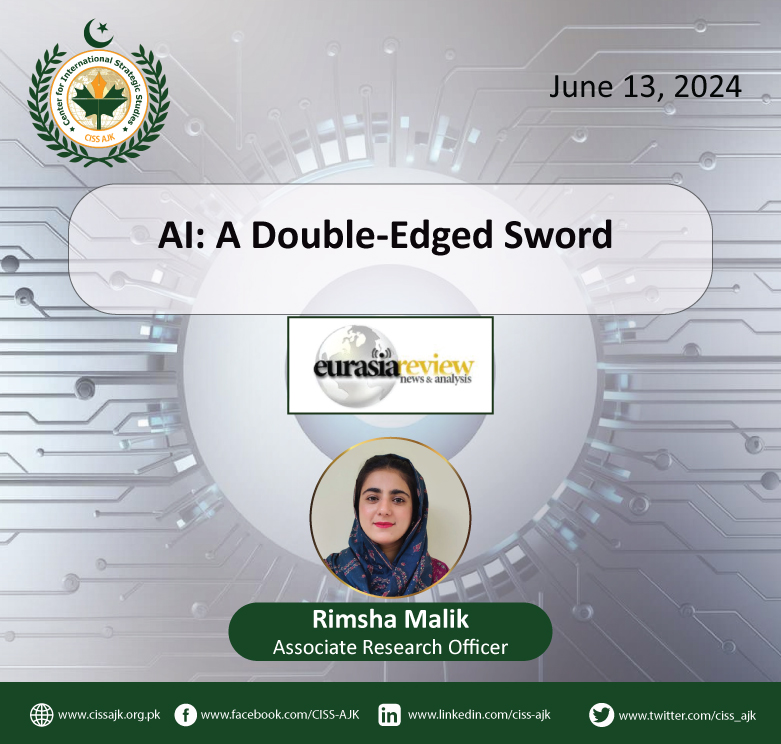The convergence of artificial intelligence with cyber security is a major advancement as we enter the 21st century’s technological renaissance. Not only is this synergy a technological marvel, but it also catalyzes breakthroughs in healthcare, education, and other fields.
Artificial intelligence refers to how computers, particularly computer systems, imitate human intellectual functions. Protecting computers from hackers is the goal of cybersecurity. AI in cybersecurity offers insights that help businesses comprehend and address problems more quickly, improving procedures like vulnerability management, threat hunting, and network security. Security issues may be automatically detected and evaluated via machine learning (ML), the foundation of artificial intelligence. While ML has been included in cybersecurity solutions including spam, phishing, URL screening, and intrusion detection systems, it has advanced gradually since the 1980s. With a focus on improving security capabilities through quicker intelligence creation, this research attempts to present an updated overview of AI applications in cybersecurity.
Globally, defense agencies are debating the effects of technological advancements, particularly artificial intelligence, and how they may affect cyber defense and combat in the future. All military forces’ defense capabilities might be strengthened by new technology in this field, albeit benefits are unlikely to be shared fairly. All governments, however, still have to contend with issues in cyberspace, such as the requirement to protect against information operations as well as cyberattacks.
At the vanguard of modern innovation, artificial intelligence and cyber technologies hold great promise. Healthcare is transforming patient care due to AI-driven diagnostics and personalized medicine, improving treatment accessibility and accuracy. AI-driven automation and data analytics are increasing productivity and stimulating the economy. AI is personalizing learning experiences in education, increasing accessibility and efficiency. But these technologies also provide important new challenges. AI and cyber technology significantly influence national security, interstate relations, and strategic competitiveness. These dual-use technologies may be used for military and civilian applications. This means that there must be a careful balance between encouraging innovation and maintaining strict controls to avoid misuse.
The ability of AI and cyber technologies to level the playing field is one of their most significant effects. Non-state actors, internet companies, and smaller countries are all becoming more and more influential internationally. Power is becoming more democratic, upending established geopolitical dynamics, and generating new power centers. These parties can enforce their interests more successfully because they have access to powerful technology tools, which might result in a world with more than one major power.
But complexity is also a part of this change. The transfer of power complicates international relations and regional stability, which adds new elements to strategic struggle. The international community has to manage these changes by promoting communication and collaboration in order to handle the new difficulties.
The military is changing as a result of the incorporation of AI and cyber technologies. The concepts of military might and deterrence are evolving. Conflict is becoming less predictable and more dynamic due to the introduction of cyber warfare capabilities, AI-driven intelligence, and autonomous weaponry systems. This progression deepens strategic rivalry, especially in areas of conflict where power dynamics are fragile.
There’s a big chance of disturbance. Nations must create comprehensive risk management plans because advanced technology in the hands of different players has the potential to destabilize regional and international security. To control the application of AI and cyber technologies in military settings, international conventions and agreements must be established. The stability of the world is being threatened by non-state actors’ and terrorists’ growing competence in using AI and cyber capabilities. These actors are capable of carrying out cyberattacks that cross country boundaries, stealing sensitive data, compromising vital infrastructure, and upsetting social norms. Because cyber threats are international, conventional ideas of warfare and sovereignty are called into question, calling for a new strategy in security.
To combat these challenges, the international community has to expand its awareness of them and create cooperative structures. This entails strengthening cybersecurity protocols, exchanging intelligence, and promoting global collaboration to alleviate the threats by non-state actors with access to technology.
A new age of opportunities and problems is brought about by integration of cyber security and AI. Although the advantages in many areas are huge, it is impossible to overlook the hazards involved. Utilizing the promise of these technologies while preventing their misuse requires striking a balance between innovation and control. Our ability to maintain a stable and secure future will depend on continued communication, strong regulatory frameworks, and international collaboration.
AI is revolutionizing cybersecurity by providing advanced methods for detecting, analyzing, and responding to threats. AI-driven security solutions enhance threat detection by analyzing vast data to identify patterns and anomalies, leading to more accurate and real-time detection of cyberattacks. They also improve incident response by automating tasks such as log analysis and alert prioritization, enabling faster and more effective mitigation of security breaches. Additionally, AI aids in predictive analytics by learning from past incidents to prevent future attacks, automates repetitive tasks like vulnerability scanning, and enhances risk assessment by analyzing data from various sources to identify vulnerabilities and manage risks efficiently. However, the same AI capabilities can be exploited by malicious actors to launch sophisticated attacks, highlighting the need to understand this dual-use nature to protect digital assets effectively.
Rimsha Malik
Rimsha Malik is an Associate Research Officer at Centre for International Strategic Studies AJK.



